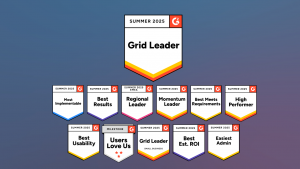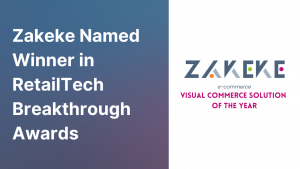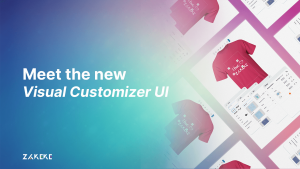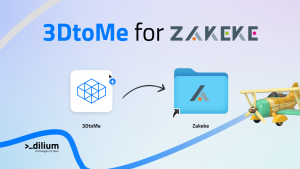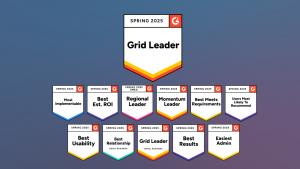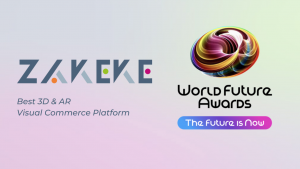In this post, we’ll delve into the crux of 3D Visualization and explain how it impacts consumer behavior. We’ll also examine how AR and 3D Visualization are redefining retail and what the future holds for these technologies.
The world is changing, and the way customers experience products has also changed. As consumers demand more customization and yearn for more personalized products, forward-thinking companies are leveraging visualization tech to achieve a competitive edge.
Technologies like 3D visualization and augmented reality (AR) have opened up a new realm of possibilities, improving customer experience and saving costs in the long run. And companies adopting these technologies are seeing a quantum leap in revenue and sales.
For instance, recent research has found that augmented reality boosts online shopping sales by up to 200%. That’s because the modern consumer, particularly millennials and Gen Z’ers, prefer shopping on sites that replace physical interactions with more engaging virtual experiences. And this is where 3D visualization comes in.
So, what is 3D visualization?
What is 3D Visualization?
3D visualization is the process of creating graphical content using 3D software. It leverages graphics, 3D modeling, and computer-generated imagery to create three-dimensional images that resemble real-world objects.
The goal of 3D visualization is to provide a digital representation of what the object would look like in the real world. A good example is companies that use try-on technology, like Guerlain. When shopping at their store, you can see realistic 3D imagery of the product you want to buy without visiting a physical store.
2D and 3D Visualization: What’s the Difference?
Online retailers focus heavily on putting their products in front of the customers.
However, online shopping suffers a major drawback; it can be difficult to determine whether the product will meet the client’s expectations by viewing the product images. And this is where 2D and 3D visualization comes into play.
In a 2D visualization, the result of visualization is a static two-dimensional image. Hence, 2D images only allow shoppers to see the product from a limited number of angles, which is less interactive. For this reason, 3D Visualization is the better option for businesses looking to increase customer engagement and sales.
In contrast, 3D Visualization allows shoppers to view product visuals from every angle and see how each part would look. Customers can interact with the product to see every detail. They can spin it, turn it, zoom in, zoom out, and do more.
What are the Advantages of 3D and AR Visualization?
The use of AR and 3D product visualization in e-commerce greatly impacts the customer shopping experience. Here are a few advantages of using 3D and AR in e-commerce.
1. It Increases the Confidence of Shoppers
Trust is the foundation of the brand-customer relationship. But how do you build trust with your customers? 56% of consumers say that additional product information inspires them to trust a brand more and make a more informed purchase decision.
In an age where consumers first research a product online before committing to buy, 3D visualization and augmented reality can help them make more informed decisions. These technologies make them envision how a product would look and feel in their home, encouraging them to buy.
2. Increase Your Conversion Rates
The longer the customers stay on your website and explore your products, the more likely they’ll make a purchase.
With a photorealistic 3D model integrated into your site, your customers can truly experience your products virtually, accelerating their conversion journey. Research shows that interacting with AR can boost your conversion rates by up to 94% as shoppers feel more connected to your brand.
3. Reduce the Product Returns
As the move to online shopping intensifies, high return rates are one of the biggest problems faced by online retailers. Research conducted by Mintel, a market research company, found that 49% of online shoppers had returned products bought in the previous year.
Addressing the question of why consumers return the goods, UPS surveyed 18,000 global online shoppers. Among the top reasons were faulty or damaged products (30%), followed closely by goods not matching the description at 27%.
The product return problem can easily be solved with the use of AR and 3D visualization. AR, for instance, offers virtual try-on and product demos, providing shoppers with an opportunity to try before they buy. As a result, customers can make more informed buying decisions, reducing the high customer return rates.
Redefining Retail: How Is 3D Closing the Loop?
The impact of 3D renderings is being felt in virtually all industries, and the retail sector is no exception. As Allan Cook, the MD at Deloitte Consulting, puts it, “The massive shift to 3D will completely transform retail and change how people shop.”
3D technology is already making waves in retail. Savvy businesses are using 3D visualization to improve customer experience and drive sales.
3D assets can also be used to create different forms of content—from key visuals to social content, CGI product shots, product customizations, etc. Investing in quality 3D designs and technology can also save your business money.
For instance, using CGIs in your catalog can remove the need for expensive photoshoots while allowing the users to view true-to-scale imagery in their homes.
The Future of 3D and AR Visualization: A Huge Global Market
As more companies realize the benefits of using 3D visualization and AR in their platforms, the 3D rendering market continues to grow.
The 3D visualization market exceeded $2 billion in 2019 and is projected to grow at an over 20% CAGR up to 2026.
The advancement in 3D modeling and emerging augmented reality/virtual reality technologies are driving the demand for efficient 3D visualization solutions. The future of 3D will take design work to a new level of quality and speed.
3D visualization coupled with augmented reality has led to the development of what tech nerds call “product display 2.0.”
Taking furniture in retail as an example, 3D Visualization and AR help customers envision the products as if they have already bought them and placed them in their apartment. Only physical stores were able to offer this kind of experience a few years ago.
Companies like Flex Arcade have already implemented AR into their e-commerce platform. The company enables shoppers to visualize their arcades while configure them in 3D and AR. Customers can choose to bring more changes to the design or complete a purchase.
By enabling a 3D product configurator, online shops can simulate the unique feeling of a product—virtually from the comfort of their home. And thanks to recent technological advancements, creating a 3D view of any product is now a simple process.
Owing to the benefits that 3D visualization brings to businesses, the adoption of 3D and AR in e-commerce stores will only increase. More and more companies will implement 3D and AR as a means to bolster customer engagement and increase sales.
Ready to Implement?
With the rapid rise shift to online shopping, you should be looking to leverage these technologies to remain relevant in a world that is constantly changing.
And there are many benefits to implementing AR and 3D Visualization. For starters, 70% of consumers say they’d remain loyal to brands incorporating AR as part of their shopping experience. In addition to brand loyalty, there is also an increase in customer engagement, lower return rates, and an increase in revenue.
Ready to get started with AR and 3D Visualization? Zakeke is the trusted ally of companies looking to implement these technologies.
We help our clients configure and customize their brands so they can give their customers confidence and the power of choice. Contact us today to learn more about how we can help you take advantage of these technologies and grow your business.
If you are wondering what you can do with Zakeke, check out our DEMO STORE.
Supported Platforms:
Stay up to date and follow us on LinkedIn, Facebook and Instagram




